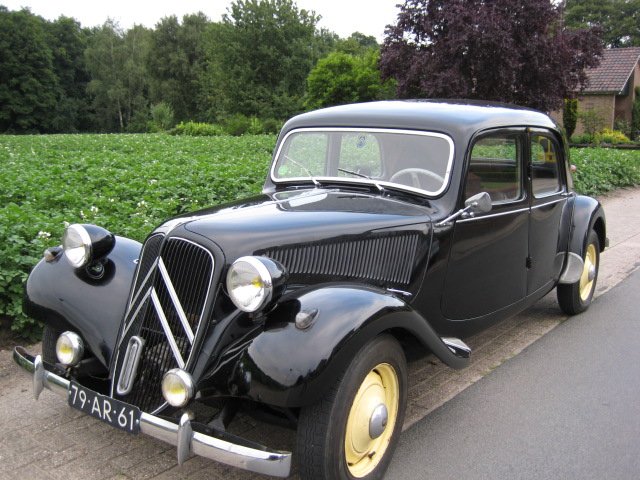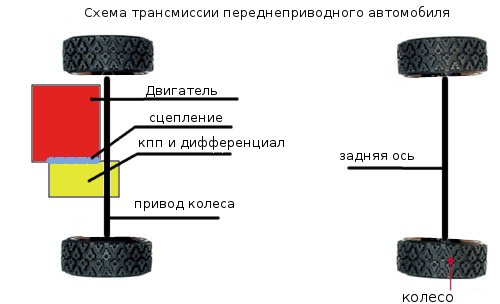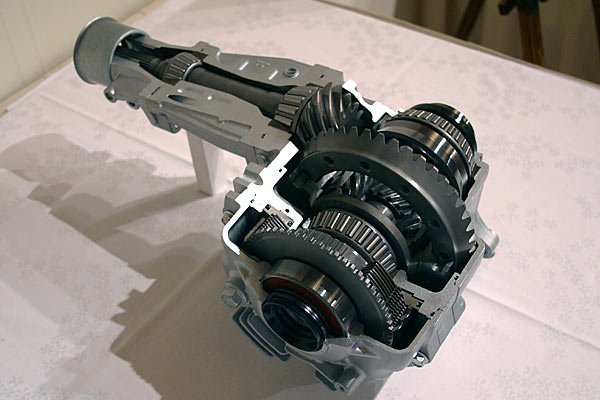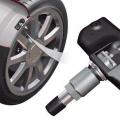When choosing a car for yourself, you can often stumble upon front-wheel drive cars, for example, a VAZ. What are the features of this design, what other firms prefer it and why?
The first front-wheel drive car and modern representatives
In such a car, the torque generated by the engine is transmitted to the front wheels, in other words, they are leading. Today, almost every manufacturer has in its list a car with such a device: this Mercedes, Audi, Renault, Skoda, Citroen, Volkswagen, Peugeot, Toyota, in general, this list can be continued for a very long time. And all these cars are well known to us and are found on the streets of the city every day.
The first front-wheel drive car was created back in 1897 by the Graff brothers. This effect was achieved due to the most common universal joints, which were located on each axis. This was the first trial version, then this type of drive found its development already in 1920 in the USA when assembling racing cars.

Today, the most powerful front-wheel drive car in mass production can be safely called Ford focus... Its power reaches 305 hp, and the torque is as much as 440 Nm.
How does the transmission of a front wheel drive car work?
The transmission of a front-wheel drive vehicle consists of the following main parts: which ensures the redistribution and transmission of torque and power to the wheels; clutch, due to which there is no or there is a connection between the gearbox and the engine itself; and drive shafts.

One of the most important elements of the transmission is the front-wheel drive differential, which is located in the gearbox along with the main gear. It is necessary in order to change, transmit and distribute the torques between consumers, as well as, if necessary, ensure their rotation with different angular speeds.

In addition, a distinctive feature of the car data device is the presence of hinges of equal angular velocities, through which the transmission of torque to the front wheels from the differential is ensured. Most often, four pivots are used, two inner ones attached to the differential and two outer ones located on the wheels. Drive shafts are located between these CV joints.
Front-wheel drive cars - behavioral features
The main advantages of such machines include the following facts.:
- the device of a front-wheel drive car assumes the absence of a propeller shaft, which significantly increases the used area of the passenger compartment;
- the production cost is much lower than in the case of the classic layout;
- a small number of drive units has the best effect on energy losses and its reliability;
- more effective braking.

But despite such clear advantages, some disadvantages are worth noting:
- cornering on a front-wheel drive car can be somewhat difficult, since the angles of the wheels are limited by the hinges;
- sharp acceleration can lead to wheel slip, while engine thrust is realized to a much lesser extent than in rear- and all-wheel drive cars;
- possible skidding of the rear axle of a front-wheel drive car during icy conditions, as well as on wet road surfaces, although it is still easier to align it than on a rear-wheel drive;
- in some conditions, during the addition of gas to the steering wheel, a reactive force can be transmitted, of course, it will not escape from the hands, but it will twitch quite strongly;
- low traction of the driving wheels does not in the best way affect the passability, especially on inclines. In this case, it is the front wheels that get stuck first, and then the car becomes completely helpless. The owners




